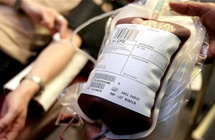干细胞有望无限造血,再也不需要献血了?
|
日前美国科学家宣布成功生产出造血干细胞,未来有望利用人体细胞无限造血,可能不再需要献血者了。 Blood donors may no longer be needed in the future after scientists showed it was possible to create blood from stem cells. The 20 year project could pave the way for an unlimited number of blood and immune cells for transplants, simply by reprogramming a patient’s own skin cells.
The research, reported in the journal Nature, holds out enormous promise for developing personalised treatments for blood disorders, drug-screening and reducing shortages of donated blood. Dr Ryohichi Sugimura, of Boston Children's Hospital, said: "This gives us the potential to have a limitless supply of blood stem cells and blood by taking cells from universal donors. This could potentially augment the blood supply for patients who need transfusions. “This step opens up an opportunity to take cells from patients with genetic blood disorders, use gene editing to correct their genetic defect and make functional blood cells.” For patients receiving treatment for cancer, blood disorders, after accidents or during surgery, or new mums who lose blood in childbirth, blood is an absolutely essential part of healthcare. But NHS Blood and Transplant - the service which collects, tests and processes blood for hospitals across England -says that while hospitals have the blood needed to treat patients there is a need for more new donors. In England the number of people becoming donors and giving blood for the first time dropped 24.4 percent in 2015 compared to 2005. Since human embryonic stem cells were isolated in 1998, scientists have been trying with little success to use them to make blood-forming stem cells. In the new research, the Boston team started with embryonic stem cells and exposed them to a chemical soup which triggered their transformation into a tissue which eventually makes blood stem cells. When the tissue was transplanted in mice, new blood cells were created in the animals. "This work is the culmination of over 20 years of striving,” said Dr George Daley, who heads a research lab in Boston Children's Hospital's Stem Cell Program and is dean of Harvard Medical School. "We're tantalizingly close to generating bona fide human blood stem cells in a dish." Another team also writing in Nature succeeded in making blood cells using a different technique. The scientists, led by Dr Shahin Rafii, from Weill Cornell Medicine in New York City, converted cells lining blood vessels into immature blood stem cells, which then finished developing after being transplanted onto a layer of umbilical cord tissue. |









